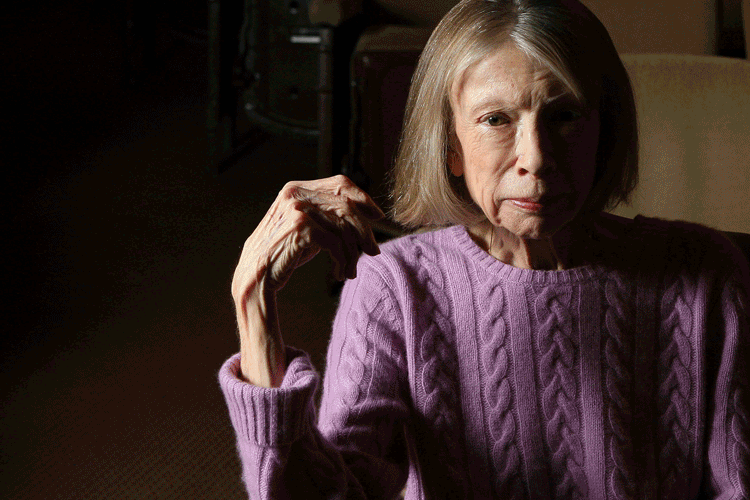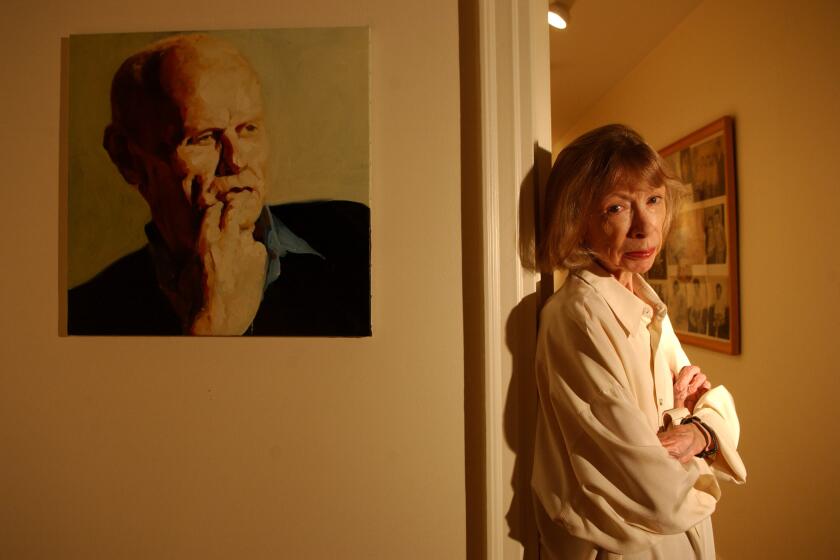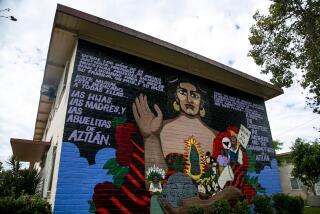The essential Joan Didion: An L.A. Times reading list for newcomers and fans alike
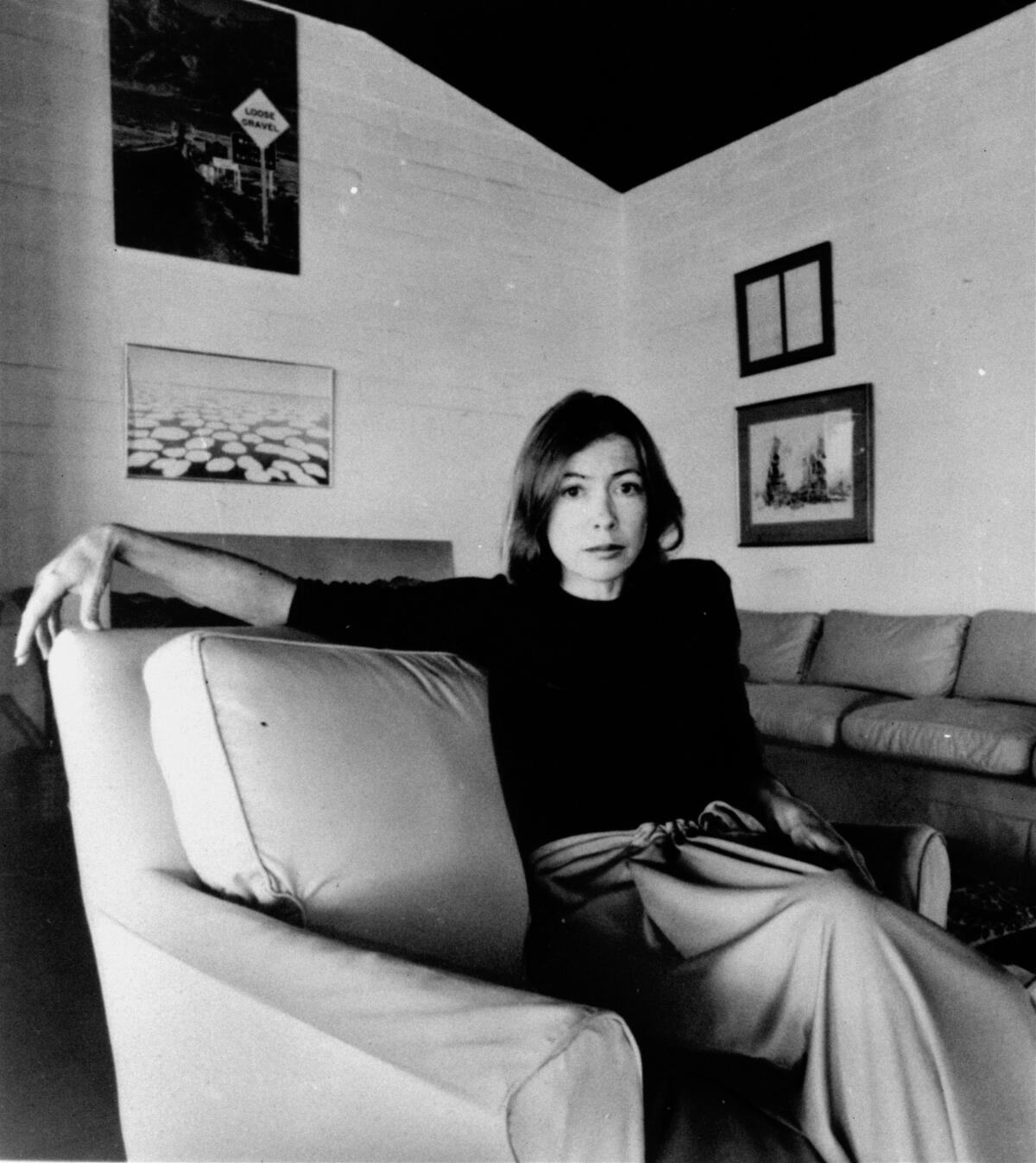
- Share via
Joan Didion, who died Thursday at 87, produced decades’ worth of memorable work across genres and subjects: personal essays, reporting and criticism on pop culture, political dispatches from at home and abroad and, near the end of her career, a bestselling memoir and a follow-up. Whether you’re a newcomer looking for a place to start or a reader looking to dive deeper, here’s a guide to Didion’s writing, start to finish:
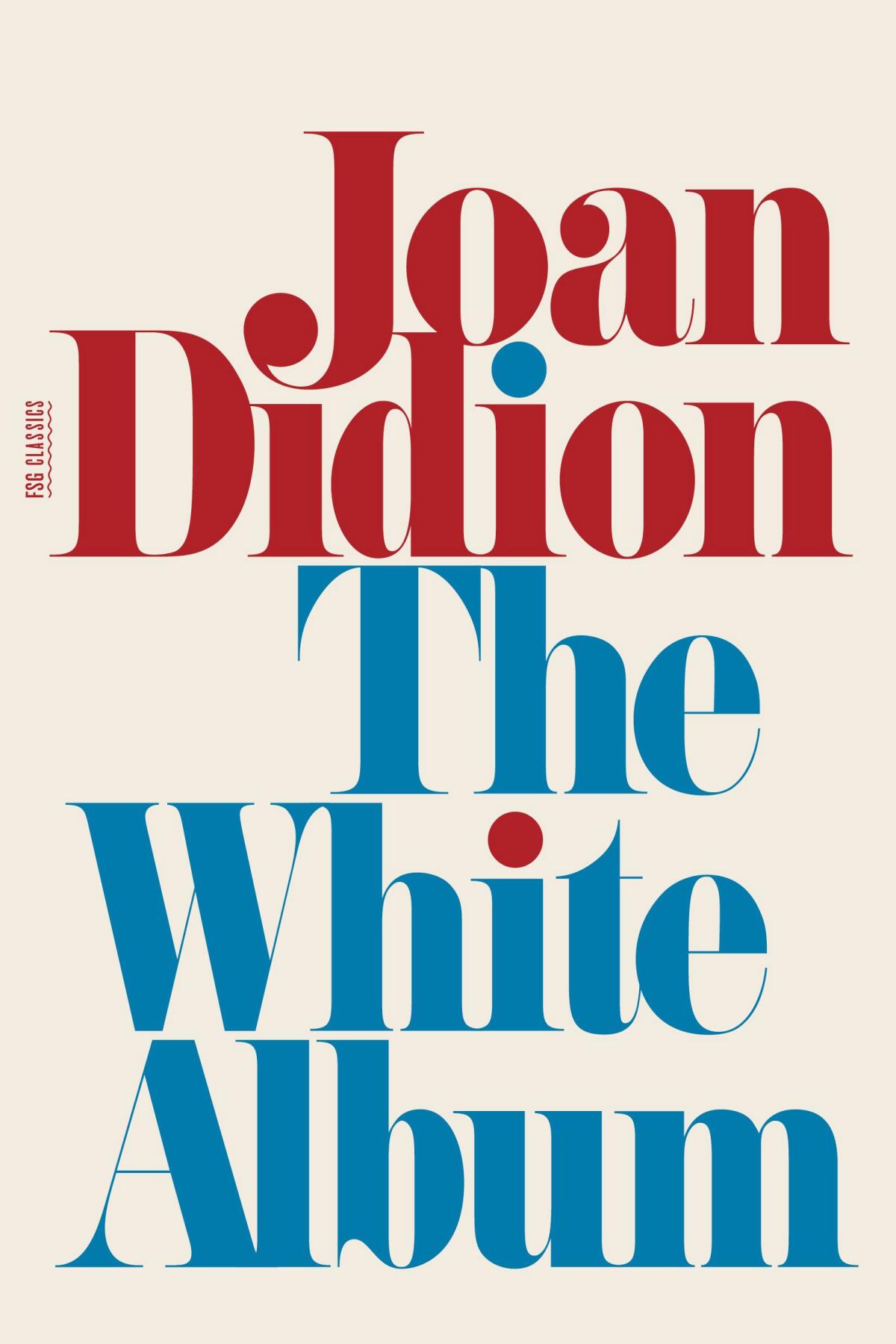
The ‘personals’
If any subset of her work made Didion’s reputation for “inevitable” sentences, it is the personal essays collected in “Slouching Towards Bethlehem” (1968) and “The White Album” (1979). These pieces, starting with “On Self-Respect” in 1961, and originally published in magazines such as Vogue, the American Scholar and the Saturday Evening Post, have come to be appreciated as models of the form, elliptical, poetic, punctuated with the author’s eye for telling detail and lacerating self-awareness. Didion’s essays carefully revealed, and concealed, the correspondent’s inner life: As she once wrote of husband John Gregory Dunne — in a piece he edited — “We are here on this island in the middle of the Pacific in lieu of filing for divorce.”
Didion later described these essays as having been written under “crash circumstances” — “On Self-Respect” was improvised in “two sittings,” she reflected in 2007, and written “not just to a word count or a line count but a character count” — yet they produced an astonishing number of unforgettable phrases: “I’ve already lost touch with a couple people I used to be” (“On Keeping a Notebook,” a personal favorite); “That was the year, my twenty-eighth, when I was discovering that not all of the promises would be kept” (“Goodbye to All That,” which invented the modern “leaving New York” essay); “We tell ourselves stories in order to live” (“The White Album,” possibly the definitive rendering of the end of the ‘60s).
Didion bridged the world of Hollywood, journalism and literature in a career that arced most brilliantly in the realms of social criticism and memoir.
A number of additional magazine pieces from her early career are collected in her final published work, “Let Me Tell You What I Mean” (2021), and her observations of self and culture from the 1970s are central to her travelogue “South and West” (2017).
The counterculture reporting
In and among the “personals” of “Slouching” and “The White Album” are Didion’s cucumber-cool lacerations of the late ‘60s, casting twin gimlet eyes on the delusions of both the rock-ribbed squares and the child revolutionaries. From the gaudy populism of the Getty and the Sacramento Reagans to a requiem for John Wayne, the marriage of bad taste and bad money fills in where the center fails to hold. The title essay of “The White Album” swirls with Jim Morrison, the Manson “family,” Linda Kasabian’s famous dress, Huey P. Newton and all the rest as Didion bravely declines to make sense of it all. The title essay in “Slouching” culminates, likewise, in the senseless final image of a 3-year-old boy, neglected and imperiled in a hippie squat. “On Morality” and “The Women’s Movement” exude the skeptical libertarianism that distanced her from the madness.
To see not just where the nation moved but where Didion did, it’s worth reading the early California pieces, including “Notes from a Native Daughter,” followed by “Where I Was From” (2003), which utterly demolishes California’s disastrous myth of self-reliance step by step, anatomizing its dependence on government largesse from the days of the Gold Rush — the water, the power, the military-industrial muscle. And finally she goes in on herself: the pioneer woman who never was.
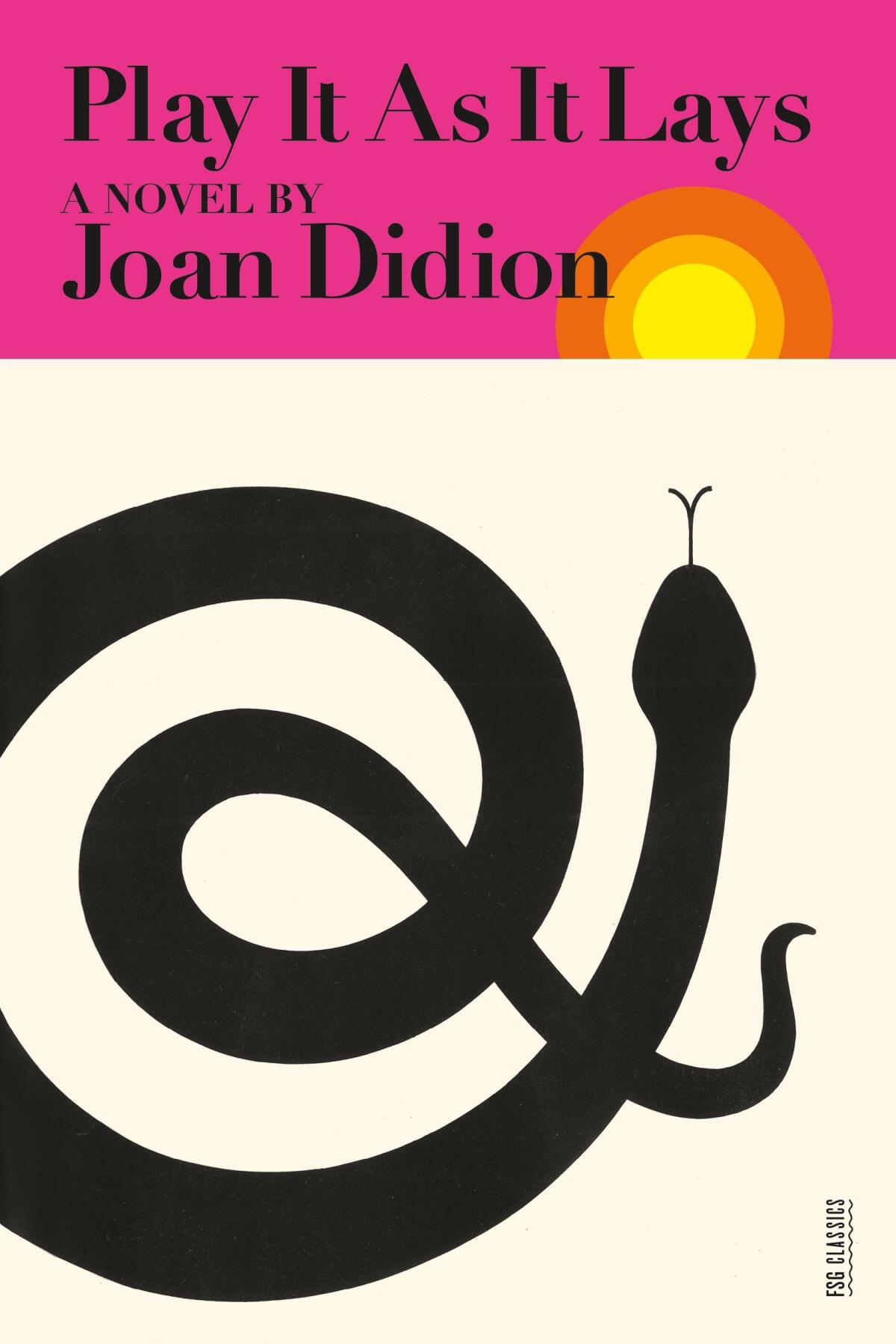
The novels
Throughout her career, Didion was best known for her nonfiction, but her five novels conjure an equally pungent sense of place and time. Her first book, “Run River” (1963) — inspired, she later wrote, by profound homesickness — is a family melodrama about the descendants of pioneers that draws heavily on Didion’s Sacramento upbringing. Perhaps her most famous novel, “Play It As It Lays” (1970), is set in a very different California: the Hollywood of the late ‘60s and early ‘70s, suffused with the anomie of its dissolute heroine, Maria Wyeth. (Her opening monologue famously begins with an ice-cold allusion to Othello: “What makes Iago evil? Some people ask. I never ask.”)
But Didion’s most underrated writing may be found in three novels that reflected her growing interest in — and suspicion of — America’s empire abroad. Set in the fictional Central American nation of Boca Grande, “A Book of Common Prayer” (1977) features both acid satire of corrupt U.S.-backed regimes and a tragic riff on the tale of Patty Hearst, as protagonist Charlotte Douglas searches for her daughter Marin, who is on the lam with a Marxist terrorist organization. Her interest in U.S. interference in the region and the absurdities of the late Cold War reappears in her final work of fiction, “The Last Thing He Wanted” (1996), about a reporter and a government official who fall in love amid a secret arms-dealing operation reminiscent of Iran-Contra.
Photos from the life of Joan Didion, who chronicled California, politics and sorrow in ‘Slouching Towards Bethlehem’ and ‘Year of Magical Thinking.’
It is “Democracy” (1984), though, that gathers these personal and political themes into the most extraordinary whole, tracing a history of violence and exploitation from the colonization of Hawaii through the dawn of the atomic age to produce Didion’s answer to the Vietnam War novel. She even casts herself as narrator: “Democracy,” set in the early 1970s, is told from the perspective of “Joan Didion,” whose focused repetitions and circular logic as she attempts to piece together the tale of a U.S. senator, his wife and her lover presage those of her blockbuster memoir, “The Year of Magical Thinking” (2005).
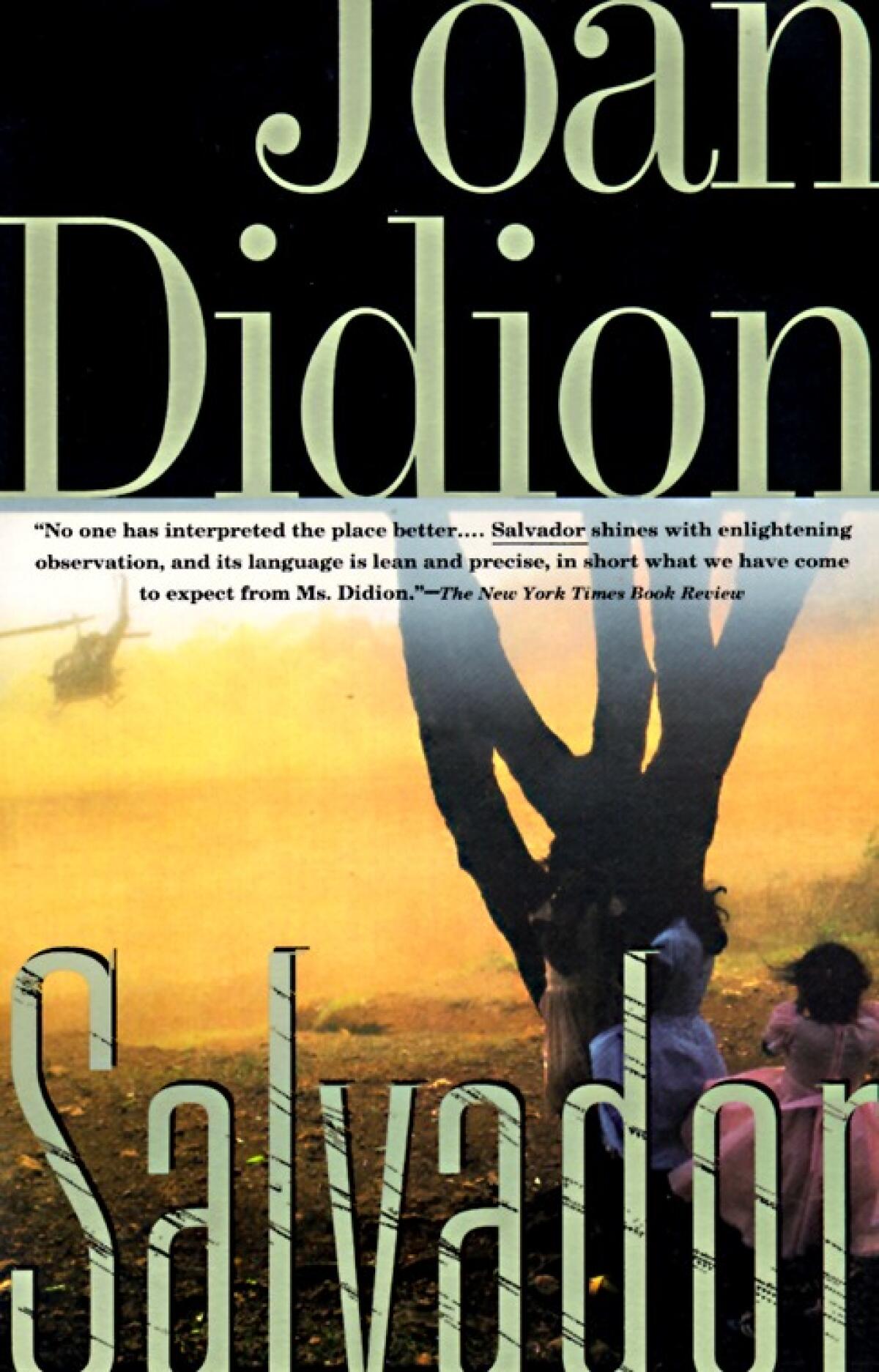
The political commentary
Though most Joan Didion primers begin, as this one does, with the personal essays, my introduction to Didion — and one I recommend if you would like to become as obsessed with her writing as I am — came through “Democracy” and the essays in “Political Fictions” (2001). Beginning in the 1980s, when she forged a close working relationship with legendary New York Review of Books editor Robert Silvers, Didion shifted the focus of her reporting away from culture: She relayed searing descriptions of war-torn El Salvador in “Salvador” (1983), captured the the conspiratorial fever surrounding much of U.S.-Cuba politics in “Miami” (1987) and detailed the ways in which Sept. 11 became a jingoistic cudgel in “Fixed Ideas” (2003).
But for their exceedingly thorough and ultimately devastating authority, there may be no better place to go to understand our current political disaster, and the media’s role in it, than Didion’s dispatches from the presidential campaigns of 1988 (“Insider Baseball”) and 1992 (“Eyes on the Prize”), her exasperated reflections on the Clinton-Lewinsky scandal (“Clinton Agonistes”) or her poisonously funny takedown of Bob Woodward (“The Deferential Spirit,” 1996), author of books “in which measurable cerebral activity is virtually absent.”
She also applied the technique in the damning “Sentimental Journeys” (collected in 1992’s “After Henry”), detailing the process by which politicians and the press railroaded the Central Park Five in the hothouse atmosphere of late-’80s New York.
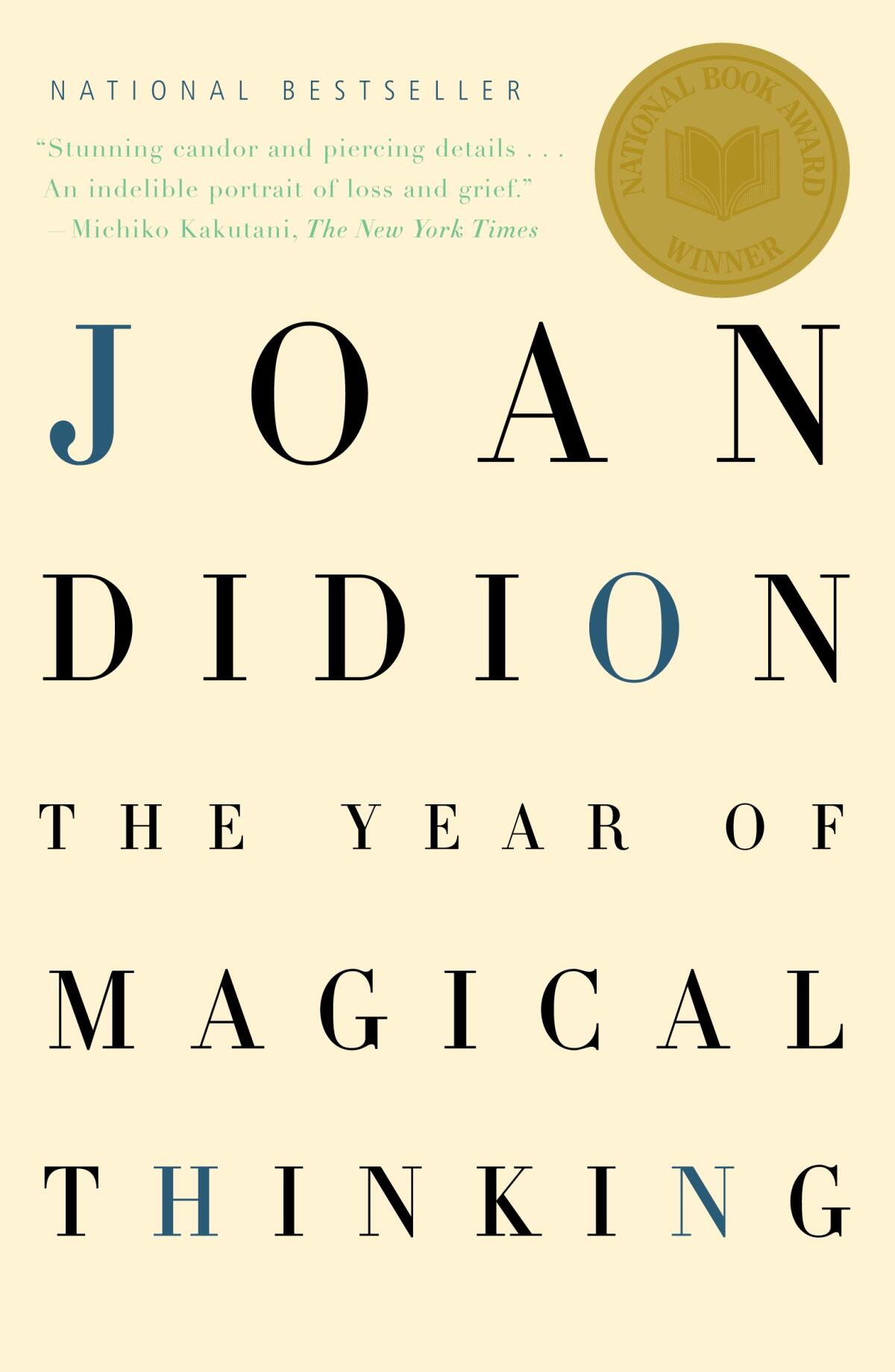
The late memoirs
Despite a career in which she befriended celebrities like Natalie Wood and Tony Richardson — and employed Harrison Ford as a carpenter — Didion reached the height of her prominence with her bestselling memoir, “The Year of Magical Thinking,” published in 2005. While she had experimented with the form two years prior in “Where I Was From,” it was her heartbreakingly lucid dissection of grief that captured the imagination of the broader public, earning her wide acclaim and the National Book Award. “Magical Thinking” recounts a year in Didion’s life in which she grappled with Dunne’s 2003 death from cardiac arrest and daughter Quintana Roo’s serious illness, combining her readings of Sigmund Freud and Emily Post with vivid memories from one of 20th century literature’s most intimate marriages. Her follow-up, “Blue Nights” (2011), which looked back on Quintana’s untimely death in 2005, offered a more caustic vision, searching her relationship with her daughter for moments she wrong-footed herself while revealing her own declining health. In the process she developed a late style all her own — incantatory and poetic but never (God forbid) sentimental.
More to Read
Sign up for our Book Club newsletter
Get the latest news, events and more from the Los Angeles Times Book Club, and help us get L.A. reading and talking.
You may occasionally receive promotional content from the Los Angeles Times.
